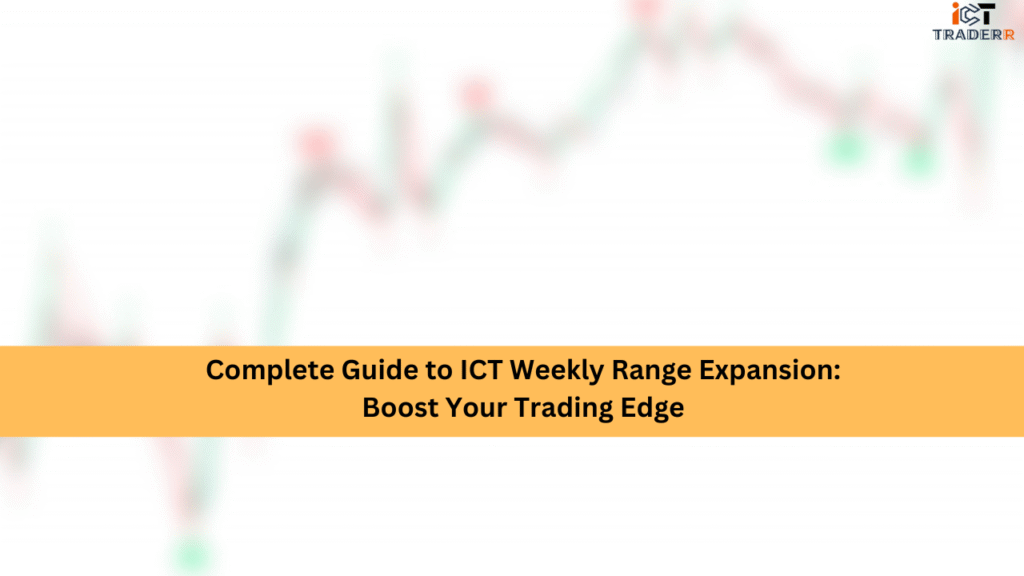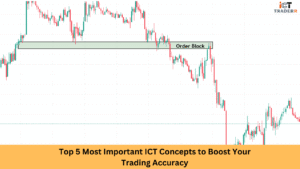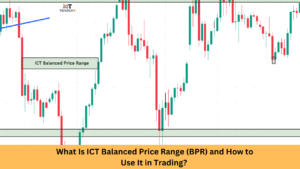Do you have any actual idea that mastery over the ICT Weekly Range Expansion can give you a terrific edge on forex trading?
This powerful concept, ICT, allows you to identify smart money movements during the weekly price cycle. In other words, whether you are new to the market or a seasoned trader, learning to identify range expansions can only enhance your entries, exits, and overall market confidence.
In this article, you will learn the ICT Weekly Range Expansion, how to spot bullish and bearish setups, risk management strategies, and pitfalls to avoid, plus some guidance on how to boost your trading accuracy.

What Is ICT Weekly Range Expansion?
ICT (Inner Circle Trader) Weekly Range Expansion concerns the measurable price movements during a given trading week (here we refer to the price expansion beyond the initial range set at the beginning of the week, specifically, Monday-Tuesday). The idea originates from and is profoundly rooted in technical analysis with price action trading characteristics and structure, citing that smart traders often push prices beyond early-week consolidations.
In the ICT Weekly Range Expansion, price is discovered as liquidity is being created by institutional investors to cause the price to break out in one direction. Traders able to read and time this movement will have a very clear edge in predicting and positioning themselves in the market.
How ICT Weekly Range Expansion Is Identified
Identifying the Weekly Range Expansion requires a keen observation of:
- Watch the price action from Monday’s open to Tuesday’s high and low. This becomes your initial range.
- Use tools like FVG (Fair Value Gaps), order blocks, and liquidity zones to identify potential areas where the price may expand.
- Confirm expansion direction during the London or New York session opening.
These elements help you distinguish between real breakouts and false ones, giving them an edge in planning entries and exits.
Bullish ICT Weekly Range Expansion: How to Spot and Trade Setups
A bullish weekly range expansion happens when the market breaks above Tuesday’s high. Here’s how to trade it:
Start by confirming a bullish bias on higher timeframes. Then, observe if price breaks above the early-week range with strong momentum—ideally after grabbing liquidity below. Once price breaks out, look for a retest of the breakout level or an order block in that zone.
This retest often gives a clean entry with a tight stop-loss. Targets can be previous swing highs or key Fibonacci extensions.
Bearish ICT Weekly Range Expansion: Identifying Trades and Managing Risk
In a bearish expansion, price breaks below the Tuesday low. It usually indicates that institutional sellers are active.
To trade it:
- Confirm a bearish trend on H4 or daily.
- Wait for the price to break the initial range and then retest the broken zone (often acting as resistance now).
- Use liquidity sweeps, imbalance zones, or a change in market structure to time your entry.
Stop-losses should be placed just above the breakdown level, with targets set at recent swing lows or demand zones.
Why ICT Weekly Range Expansion is Important for Traders
Weekly range expansion offers several advantages:
- It helps you follow institutional flow rather than retail noise.
- It allows for high-reward setups with clean entries.
- It reduces overtrading by encouraging traders to wait for clear breakouts or fakeouts.
- It aligns with smart money concepts like liquidity pools, market structure shifts, and time-based analysis.
When understood properly, it becomes a strategic tool to stay in sync with the market’s true direction.
Common Mistakes Traders Make with Weekly Range Expansion
Even skilled traders fall into traps like:
- Entering too early before the range is broken with confirmation.
- Trading against the trend, hoping the breakout will reverse.
- Mistaking liquidity grabs for breakouts.
- Using overly tight or wide stop-losses without logic.
Avoiding these mistakes requires discipline, backtesting, and patience.
Tips to Improve Accuracy When Trading Weekly Range Expansion
Here are some practical tips to trade better:
- Always mark Monday and Tuesday’s range on your chart.
- Use FVGs, OBs (Order Blocks), and liquidity zones for confluence.
- Confirm with time of day—London Open and New York Open are most reliable.
- Journal your trades to analyze what works and what doesn’t.
- Wait for a clean break and retest, don’t chase price.
- Sticking to a repeatable process is more important than prediction.
Conclusion
Understanding and applying the ICT Weekly Range Expansion can transform your trading strategy. By identifying early-week ranges and recognizing smart money behavior, you can position yourself for high-probability setups. Avoid common mistakes, use multiple confirmations, and practice good risk management to truly harness the power of this concept.
By integrating ICT methods with consistent discipline, you’re not just trading—you’re strategically aligning with the market’s institutional flow.
FAQs
Can the ICT Weekly Range Expansion be used in day trading?
Yes, especially on Tuesdays and Wednesdays when weekly expansions often begin.
Is this strategy only for forex?
No, it can be used across markets—crypto, indices, and commodities.
What’s the best time to look for expansion?
The London Open on Tuesday/Wednesday is ideal for spotting potential expansion.
Do I need premium indicators for this?
No, ICT is mainly price-action based, relying on pure chart analysis.
How long should I hold a trade after expansion?
It depends on your target, but usually, trades can last until Friday’s close or a major liquidity level.



